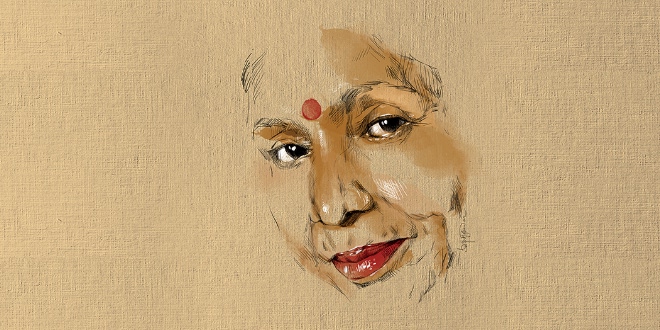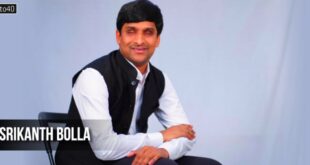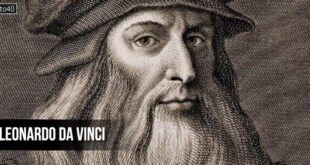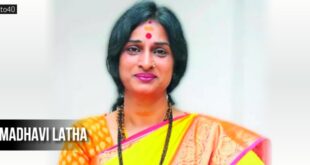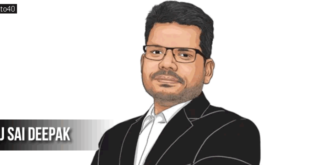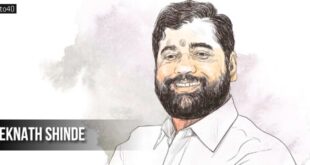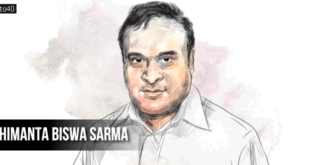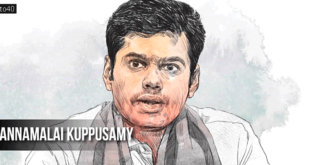| Name: | Asha Bhonsle (Ashatai) |
| Birthday: | 8 September 1933 Goar, Sangli State, British India (present-day Maharashtra, India) |
| Parents: | Deenanath Mangeshkar (Father) |
| Spouse(s): | Ganpatrao Bhosle (married in – 1949; separated in – 1960; died in – 1966) R. D. Burman (married in – 1980; died in – 1994) |
| Occupation(s): | Playback Singer, Vocalist |
| Honours: | Padma Vibhushan (2008) Dadasaheb Phalke Award (2000) |
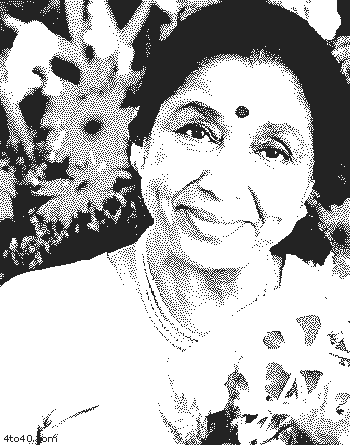 Asha Bhonsle — The famous playback singer, Asha Bhonsle has sung over 20,000 songs in practically every Indian language and also in English. She has a unique style of singing. Asha Bhosle is an Indian singer. She is best known as a Bollywood playback singer, although she has a much wider repertoire. Her career started in 1943 and has spanned over six decades. She has done playback singing for over 925 Bollywood movies and sold many records. She is the sister of the equally popular Lata Mangeshkar.
Asha Bhonsle — The famous playback singer, Asha Bhonsle has sung over 20,000 songs in practically every Indian language and also in English. She has a unique style of singing. Asha Bhosle is an Indian singer. She is best known as a Bollywood playback singer, although she has a much wider repertoire. Her career started in 1943 and has spanned over six decades. She has done playback singing for over 925 Bollywood movies and sold many records. She is the sister of the equally popular Lata Mangeshkar.
Asha Bhonsle was born on 8th September, 1933 in Goar, Maharastra to a family of musicians, the Mangeshkar’s. Asha started her career in her elder sister Lata Mangeshkar’s shadow. Her first song was from the movie ‘Chunaria’ (1948) and her first solo was for the movie ‘Raat Ki Raani’ (1949).
In the beginning her talents were not known much and it was music directors like O.P. Nayyar and R. D. Burman who gave her a chance and helped Asha to get out of the image of her sister. ‘teesri Manzil’, ‘Ijazat’, ‘Khushboo’ with R.D.Burman; ‘Mere Sanam’, ‘Kashmir Ki Kali’, ‘Ek Musafir Ek Haseena’, ‘Pran Jaye Par Vachan Na Jaye’ and many others with O.P.Nayyar, Asha has given a lot of unforgettable songs to the Hindi film industry for the last four decades. She has a unique voice- a sexy, cheerful style of singing of her own. Famous hits like ‘Piya tu’, ‘Dum Maro Dum’ are a proof of her unique style.
She is at ease with both ghazals as well as fast numbers. She has sung Qawali numbers like ‘Nighan Mila Ne Ko Jee Chahta Hai’, ‘Raaj Ki Baat Kahdu To’ and ‘Hum Kisise Kum Nahin’; Bhajan, ‘sun Le Pukar’; Gazal, ‘Is Akhon Ki Masti Ke’.
Asha Bhonsle has received accolades of awards for her talent. – National Award twice in 1981 for ‘Dil Cheez Kya Hain’ (Umrao Jaan) and in 1986 – for ‘Mera Kuch Samaan’ (Ijazat), the Filmfare award eight times, from 1967 to 1977 besides many other awards. She was the first Indian Singer to be nominated for the Grammy Award in 1997 and in 2001 she won the Dada Phalke Award and Dayawati Modi Award.
Asha Bhosle is considered as one of the most versatile of South Asian singers — her range of songs includes film music, pop, ghazals, bhajans, traditional Indian Classical music, folk songs, qawwalis, and Rabindra Sangeet. She has sung in over 14 languages including Hindi, Marathi, Bengali, Gujarati, Punjabi, Tamil, English, Russian and Malay.
Asha Bhonsle: Biography
Asha Bhosle was born in the small hamlet of Goar in Sangli, Maharashtra, into the musical Marathi family of Pandit Dinanath Mangeshkar. Her father was a theater actor and classical singer who had been born in the village of Mangeshi in Goa. When she was nine years old, her father died. The family moved from Pune to Kolhapur and then to Bombay. She and her elder sister Lata Mangeshkar began singing and acting in films to support their family. She sang her first film song Chala Chala Nav Bala for the Marathi movie Majha Bal (1943). The music for the film was composed by Datta Dawjekar. She made her Hindi film debut when she sang the song Saawan aaya for Hansraj Behl’s Chunariya (1948).
At the age of 16, Asha Bhonsle eloped with 31-year old Ganpatrao Bhosle, marrying him against her family’s wishes. The marriage failed miserably. Her husband and in-laws mistreated her. After a few years of marriage, Bhosle returned to her maternal home with two children and pregnant with her third child, Anand. She continued to sing in films to earn money.
At that time, prominent playback singers like Geeta Dutt, Shamshad Begum and Lata Mangeshkar (her sister) monopolized the singing for the “heroine” roles and the big films. Asha Bhosle used to get the assignments they didn’t take: singing for the bad girls and vamps, or songs in the second-grade movies. In the 1950s, she sang more songs than any other playback singer in Bollywood, but most of these were in B or C-grade films. Her earliest songs were composed by A R Qureshi, Sajjad Hussain and Ghulam Mohammed, but none of these were hits. Her songs in Dilip Kumar-starrer Sangdil (1952), composed by Sajjad Hussain, got here some recognition. Bimal Roy gave her a chance to sing in Parineeta (1953). Raj Kapoor also gave her chance to sing Nanhe munne bachche with Mohammed Rafi in Boot Polish (1954), which became very popular.
She also sang many songs for Marathi films such as Majha hoshil Kaa?, Khedyamadhle ghar kaularu, bugadi mazi and Nach re mora which are considered classics today. She also sang many Marathi bhajans, natyageet and bhav-geet in this period which are popular in Maharashtra to this day.
O. P. Nayyar gave Asha Bhosle a big break in C.I.D. (1956). She first achieved success in B. R. Chopra’s Naya Daur (1957), composed by O. P. Nayyar. O. P Nayyar and Asha Bhosle’s collaboration produced many hits. Later, she also received patronage of composers such as Sachin Dev Burman and Ravi. O P Nayyar and Asha Bhosle had a professional and personal parting of the ways in the 1970s.
In 1966, Asha Bhonsle performance in the duets from music director R D Burman’s first successful movie, Teesri Manzil won popular acclaim. Their collaboration produced several hits in the 1970s and resulted in a marriage. In 1960s and 1970s, she became the voice of Bollywood’s most famous dancer, Helen. It is said that Helen would attend her recording sessions so that she could understand the song better and plan dance steps accordingly. Some of the most popular Asha Bhosle-Helen numbers are Piya tu ab to aaja (Caravan), O Haseena Zulfon Wali (Teesri Manzil), and Yeh Mera Dil (Don).
In Umrao Jaan (1981) and Ijazat (1987), she sang beautiful traditional ghazals and proved her versatility.
Her film activities slowed in the 1990s. Her performance in the 1994 hit Rangeela was particularly notable. As late as 2005, 72-year-old Asha Bhosle’s numbers for the Tamil film Chandramukhi and Lucky Lips for Salman Khan-starrer Lucky were chart busters.
Career Milestones
Seen more closely, Asha Bhosle’s singing career can be considered having four milestones — Naya Daur (1957), Teesri Manzil (1966), Umrao Jaan (1981) and Rangeela (1995).
• Naya Daur, 1957
Asha Bhosle’s first big success was B R Chopra’s Naya Daur (“The New Age”, 1957). Her duets with Rafi like Maang ke saath tumhara, Saathi haath badhana and Uden jab jab zulfein teri, penned by Sahir Ludhianvi and composed by O. P. Nayyar, gave her recognition. Asha Bhonsle and O P Nayyar had worked earlier as well. But it was the first time that she had got to sing all the songs for the lead actress. B R Chopra, the producer of Naya Daur recognized her talent and got her to sing in many of his later films including Waqt and Gumraah, Humraaz, Aadmi Aur Insaan, Dhund etc.
• Teesri Manzil, 1966
Asha Bhosle became a pop crooner with Rahul Dev Burman’s Teesri Manzil (1966). When she first listened to the tune of the song Aaja Aaja, she felt that she would not be able to sing the Western dance number. R D Burman offered to change the music. She was offended a bit and took it as a challenge to sing the song. After rehearsing for 10 days, when she finally sang the song, an impressed R D Burman handed her a 100-rupee note. Aaja Aaja and other songs of the film, O Haseena Zulfonwali and O Mere Sona Re (all three duets with Rafi, another popular Bollywood singer), became rage of the day. Shammi Kapoor, the actor of the movie, once said – “If I did not have Mohammad Rafi to sing for me, I would have got Asha Bhosle to do the job”.
• Umrao Jaan, 1981
By 1980s, Asha Bhosle had been stereotyped as a “cabaret singer” and a “pop crooner”. In Rekha-starrer Umrao Jaan, she sang ghazals like Dil cheez kya hai, In aankhon ki masti ke, Ye kya jagah hai doston and Justju jiski thi. The songs proved her capable of doing fairly serious songs. The music director Khayyam, had lowered her pitch by half a note. Asha herself was surprised that she could sing so differently. The ghazals won her the first National Award of her career and proved her versatility.
• Rangeela, 1995
In 1995, a 62-year old Asha Bhosle did playback for young actress Urmila Matondkar in the movie Rangeela. She pleasantly surprised her fans with superhit songs like Tanha Tanha and Rangeela Re. The songs were composed by iconoclastic music director A. R. Rahman, who went on to record many more songs with her. Particularly notable was Asha Bhosle first song with A. R. Rahman, Tanha Tanha, an oomph-oozing number.
Asha Bhonsle: Partnership with Music Directors
O. P. Nayyar
Music director O. P. Nayyar’s association with Asha Bhosle is part of Bollywood lore. When her talent was not recognized by anybody in Bollywood, Nayyar recognized her potential and gave patronage to her. He was the composer who first gave Asha her own distinct identity. Many people have speculated about a romantic relationship between the two.
Nayyar first met Asha in 1952, at the music recording of Chham Chhama Chham [6]. He first called her for a film called Mangu (1954)). He gave her a big break in CID (1956). However, it was the success of Naya Daur (1957), that made the duo very popular. After 1959, she was emotionally and professionally involved with Nayyar.
The team of O. P. Nayyar and Asha Bhosle is best remembered for their breezy and sometimes sirenish songs. Some good examples of their sensuous numbers are Aaiye meherbaan picturized on Madhubala (Howrah Bridge, 1958) and Yeh hai reshmi zulfon ka andhera picturized on Mumtaz (Mere Sanam, 1965).
They recorded songs for many hit movies like Naya Daur (1957), Tumsa Nahin Dekha (1957), Howrah Bridge (1958), Ek Musafir Ek Hasina (1962), Kashmir ki Kali (1964), etc. Some of their most popular songs include Aao huzur tumko (Kismat), Jaaiye aap kahan (Mere Sanam) etc. O.P. Nayyar used the Asha Bhosle-Mohammad Rafi duo for his most popular duets. some of these songs include Ude jab jab zulfein teri (Naya Daur). Main pyaar ka rahi hoon (Ek Musafir Ek Haseena), Deewana Hua Baadal, Ishaaron hi isharon mein (Kashmir Ki Kali) etc.
Asha recorded her last song for O.P. Nayyar in the movie Pran Jaye Par Vachan Na Jaye (1974). The solo number Chain se got many awards, but it wasn’t included in the movie.
They split on August 5, 1972. It is not clear what made them part their ways. On being asked the reason for their parting, O P Nayyar once said, “I know astrology very well. I knew that one day I had to part with her. Something also happened, that upset me, so I left her.” Nevertheless, he also said “…now that I am seventy-six, I can say that the most important person in my life was Asha Bhosle. She was the best person I ever met.”
The parting of Asha Bhosle and O. P. Nayyar was bitter, and probably therefore she has hesitated to give Nayyar his due. While talking about O. P. Nayyar in an interview with The Times of India, she once remarked – “Whichever composer gave me work, it was because my voice was suited to his music at that point. No one musician did me any favor by asking me to sing for him.” She gives the credit for her first big break to B. R. Chopra, the producer of Naya Daur.
Khayyam & Asha Bhonsle
Another music director who recognized Asha Bhosle’s talent early was Khayyam. His partnership with Asha Bhosle dates back to his first movie Biwi (1948). Khayyam gave her some good assignments in the 1950s, including Dard and Phir Subah Hogi. But the team is chiefly remembered for the songs of Umrao Jaan.
Ravi & Asha Bhonsle
Music composer Ravi considered Asha as one of his favorite singers. She sang for his first movie Vachan (1955). The melodious lullaby from the movie, Chandamama door ke became an overnight hit among young mothers in India. Ravi got her to sing bhajans for the movies Gharana, Grihasti, Kajal and Phool aur Patthar, at a time when most of the composers remembered her only when they needed to record B-grade songs picturized on the vamps or the side-heroines. Ravi and Asha Bhosle recorded a variety of songs, including the popular funny duet with Kishore Kumar – C A T…Cat maane billi (Dilli Ka Thug). The bhajan Tora man darpan (Kajal) is considered one of Asha Bhosle’s best songs.
They also recorded songs for many popular movies like Waqt, Chaudhvin Ka Chand, Gumrah, Bahu Beti, China Town, Aadmi Aur Insaan, Dhund, Humraaz, and Kajal with her. For Chaudhvin Ka Chand, Ravi wanted Geeta Dutt (the wife of producer Guru Dutt) to sing the songs. But when she backed out, Guru Dutt insisted that Asha Bhosle sing the songs.
Sachin Dev Burman
One of Bollywood’s most famous composers, Sachin Dev Burman and his favorite singer, Lata Mangeshkar, were not on good terms from 1957 to 1962. During this period, S D Burman used Asha Bhosle as his lead female voice. She and S D Burman gave many hit songs in movies such as Kaala Pani, Kaala Bazaar, Insaan Jaag Utha, Lajwanti, Sujata and Teen Deviyaan (1965). They recorded many songs together after 1962 as well. Most famous of these songs were Asha Bhosle’s duets with Mohammed Rafi and Kishore Kumar.
The song Ab ke baras in Bimal Roy’s Bandini (1963) consolidated her position as a lead singer. The seductive song Raat Akeli Hai from Jewel Thief (1967), picturised on Tanuja, became very popular.
Rahul Dev Burman (Pancham)
Asha first met Rahul Dev Burman (a.k.a. “Pancham”) when she was a mother of two and he was in 10th grade having dropped out to pursue music. Their partnership was first noticed in Teesri Manzil (1966). She went on to record a variety of songs with him – cabarets, rock, disco, ghazals, Indian classical music and many more.
In the 1970s, Asha Bhosle and Pancham’s youthful, Western songs took Bollywood music by storm – the raunchy cabaret Piya tu ab to aaja (Caravan, 1971, picturized on Helen), the rebellious Dum Maro Dum (Hare Krishna Hare Rama, 1972), the sexy Duniya mein (Apna Desh, 1972), the romantic Chura liya (Yaadon Ki Baarat). Pancham also recorded many hit duets with Asha Bhosle and Kishore Kumar – Jaane jaan, dhoondhta phir raha (Jawani Diwani), Bhali bhali si ek soorat (Buddha Mil Gaya) etc.
In 1980s, Pancham and Asha Bhosle recorded subtle numbers for films like Ijazat (1987) – Mera kuch saaman, Khaali haath shaam aayi hai, Katra Katra. They also recorded the popular duet O Maria (Sagar). Mera Kuchch saamaan, the R. D. Burman composition for Gulzar’s Ijaazat won her the National Award for Best Singer.
Asha Bhosle used to call R D Burman, “Bubs”. She married him in 1980. Their partnership lasted until his death.
Ilaiyaraaja & Asha Bhonsle
The prolific south Indian film composer Ilaiyaraaja began employing Asha Bhosle’s vocals in the early 1980s, their earliest collaboration being for the film Moondram Pirai (1982) (or Sadma, its Hindi remake in 1983). Their association continued, mostly through the latter half of the 1980s and early 1990s. Some of their notable songs from this period include Shenbagamae (Enga Ooru Paattukkaaran, 1987, Tamil). In 2000, Asha sung Ilaiyaraaja’s theme song for Kamal Haasan’s political film Hey Ram. The song, Janmon Ki Jwala (or Aparna’s Theme), was a duet with ghazal singer Hariharan.
A. R. Rahman
A. R. Rahman is given the credit for Asha Bhosle’s “comeback” with Rangeela (1994). Songs like Tanha Tanha and Rangeela Re were chartbusters. She and Rahman went on to record more hits like Mujhe Rang De (Thakshak), Radha kaise na jale (Lagaan), duet with Udit Narayan), Kahin aag lage (Taal, 1999), O Bhanware (Daud, duet with K J Yesudas), Venilla Venilla (Iruvar,1999). Rahman once said, “I think of them (Lata and Asha) only when I feel I have composed something that fits their stature”.
Other Composers
Asha Bhosle has worked with many other composers too, most notably Jaidev and C Ramchandra. Asha recorded one of the Bollywood’s first Rock n’ Roll numbers Eeena Meena Deeka with C Ramachandra . C Ramachandra used Asha Bhosle as the chief singer in many of V. Shantaram’s films, the most notable being Navrang (1959). When S D Burman’s assistant, Jaidev started giving music independently, he got Asha to sing some of his songs as well. They worked in Hum Dono, Mujhe Jeene Do and other movies.
Whenever Kishore Kumar composed music for his films such as Jhumroo and Door Gagan ki chhaon mein(1964), Asha used to be his first choice.
Asha has also worked with many other composers like Naushad, Madan Mohan, Shankar-Jaikishan, and Salil Chaudhary among others. Shankar Jaikishan worked very little with Asha. However, the team produced quite a few hits including the seductive Parde mein rehne do (Shikar, 1968). Asha got her second Filmfare Award for the song. Asha also sang the song Zindagi ek safar hai suhaana (Andaz) for Shankar Jaikishan, in which she tried to yodel like Kishore Kumar, whose version of the song is more better known. When Raj Kapoor was not on speaking terms with Lata Mangeshkar, Asha got to sing the songs of Mera Naam Joker (1970), composed by Shankar-Jaikishan. Madan Mohan also recorded few songs with Asha, including the popular folk number Jhumka gira re from Mera Saaya(1966). In Chhoti Si Baat (1975), Asha sang the Jaaneman Jaaneman number with K J Yesudas for Salil Chowdhury.
Composer Anu Malik and Asha have recorded many hit songs together, including songs for his first movie Soni Mahiwal (1984). Their most popular songs include Filhaal (Filhaal), Kitabein bahut si (Baazigar) among others. The four lines sung by Asha in Anu Malik’s Jab dil mile (Yaadein) stood out among voices of Sukhwinder Singh, Udit Narayan and Sunidhi Chauhan. Another Asha patron is the young composer Sandeep Chowta, who got her to sing Kambakht Ishq (A duet with Sonu Nigam) (Pyaar Tune Kya Kiya, 2001). The song was very popular among the Indian youngsters.
Asha has worked with Lata-patrons like Laxmikant-Pyarelal, Naushad, Ravindra Jain, N Dutta, Hemant Kumar. Once when Naushad was asked to sum up the essential difference between Lata and Asha, he said that Asha “lacks certain something which Lata, and Lata alone has”. Later he accepted in an interview, “May be I said it because I then had a closed ear on Asha”. Naushad, later in his life, also admitted that he has been unfair to Asha Bhonsle. Asha has also worked with other noted Bollywood composers like Jatin Lalit, Bappi Lahiri, Kalyanji-Anandji, Usha Khanna, Chitragupta, and Roshan.
Marathi Music
Alongside her sister Lata Mangeshkar, Asha Bhosle is regarded as an icon of Marathi music (Marathi is her mother tongue). She has sung several non-film songs of the genre commonly referred to as Bhaav Geet, which consist mostly of poems written by gifted poets.
Asha’s renditions of her brother Hridayanath Mangeshkar’s compositions have enchanted Marathi music lovers worldwide. As in Hindi; her Marathi songs also represent her amazing range. From playful westernized tunes like Ruperi Walut (”meet me on the silver sands in the coconut groves”) to highly complex compositions such as Tarun aahe Ratra Ajuni (”The night is still young”) her voice has been a perfect instrument to bring these melodies to life in their full glory. Asha’s powerful Marathi bhajans are very popular among Maharashtrians. A good example is her rendition of saint-poet Dnyaneshwar’s Kanadawo Vithallu.
Asha is endearingly referred to as Ashatai (tai is Marathi for sister) by Maharashrians. She performs a very popular Marathi concert titled Nakshtranche Dene (“Gift from the constellation”).
Asha Bhonsle: Private Albums
In 1995, Asha underwent the gatha bandan (thread-tying) ceremony with Hindustani classical music maestro Ali Akbar Khan to learn a classical repertoire held within the Maihar gharana (stylistic school of Indian classical music), as handed down to Khan by his father Allauddin Khan (the guru of Ravi Shankar). Later, Asha and Ustad Ali Akbar Khan recorded eleven fixed compositions (or bandishes) in California for Legacy, a private album that won them a Grammy Award nomination.
In 1990s, Asha experimented with the remixed R D Burman songs. She was criticized by many, including Khayyam for tampering with old melodies. Nevertheless, albums like Rahul And I became quite popular. In 1997, Asha did a private Indipop album Janam Samjha Karo with Leslie Lewis. The album was hugely popular and won her many awards including the 1997 MTV Award.
Asha had been once asked by the director B R Ishaara to compose music for one of his films, but she had politely declined. In 2002, she turned music composer with the album Aap Ki Asha, an eight-song music and video album. The lyrics were written by Majrooh Sultanpuri (his last lyrics) and the music was composed by Asha herself. The album was released by Sachin Tendulkar on May 21, 2001 at a lavish party in Mumbai. The album received mixed reviews.
Asha had spotted Pakistani singer Adnan Sami’s talent when he was about 10 years old. At that time was performing in London, with R D Burman. It was she who had asked him to pursue his interests in music seriously. When Adnan grew up and became a professional musician, Asha sang the title duet with him for his best-selling album Kabhi to nazar milao. The two came together again in the album Barse Badal. The album comprises of eight songs, based on Indian Classical music. She contributed the song Yun Na Thi to the recording Womad Talking Book Volume Four: An Introduction to Asia 1 on Womad Records.
Asha has sung ghazals for many albums like Meraj-E-Ghazal, Aabshar-E-Ghazal and Kashish. In 2005, Asha released a self-title album (Asha), a tribute to the four ghazal maestros – Mehdi Hasan, Ghulam Ali, Farida Khanum and Jagjit Singh. The album features eight of her favorite ghazals like Farida Khanum’s Aaj Jaane Ki Zid Na Karo, Ghulam Ali’s Chupke Chupke, Aawargi and Dil Mein Ek Lahar, Jagjit Singh’s Ahista Ahista and Mehdi Hassan’s Ranjish Hi Sahi, Rafta Rafta and Mujhe Tum Nazar Se. These classic ghazals were recreated with modern sounds by the musician Pandit Somesh Mathur. The album was aimed at the younger generation, who, according to Asha, are “turned off” by the traditional sounds of tabla and sarangi.
Numerous compilations of Asha’s songs have been released as well. To commemorate her 60th birthday, in 1993 EMI India released three cassettes: Bala Main Bairagan Hoongi (devotional songs), The Golden Collection: Memorable Ghazals (non-film ghazals by composers such as Ghulam Ali, R D Burman and Nazar Hussain), and The Golden Collection: The Ever Versatile Asha Bhosle (44 popular film songs).
Concerts and Collaborations with Foreign Artists
In 1980s and 1990s, Asha went globe-trotting, staging concerts in Canada, Dubai, UK, USA and many other countries. In 1989, during a world tour, she performed in 13 US cities in 20 days. Immediately after this, she had an already sold-out concert scheduled in Stockholm, Sweden. Due to the stressful schedule, Asha suffered a massive attack of colitis, together with fever, cough and weakness. In Stockholm, a pre-concert crisis meeting was called, attended by Asha’s son (and manager) Anand and the sponsors. It was decided that the orchestra will play many instrumental tracks, the accompanying singers like Suresh Wadkar will shoulder the load, and Asha will make a small appearance. But Asha rejected all such “insane” proposals. Asha’s sang at the concert with great difficulty, in a not-so-good voice. Her first set of six Bollywood songs didn’t receive any response from the audience, which consisted mostly of Indian and Pakistani expats. Before the start of the second set of songs, a fan in the crowd requested her to sing a Marathi song. Asha obliged and sang Naach-naachuni ati mi damale (”I’m very tired of this endless dancing”). The mood took her over, and she rendered the song very beautifully. When the song ended, the auditorium erupted with claps and the encores started. After the concert, Asha was in bed for a month, recuperating from overexertion. In October 2002, she did a concert with Sudesh Bhosle and others, in London, for “Help the Aged” to help raise funds for older people in India.
In the mid-1980s, Asha sang with Boy George (Bow down mister) and Stephen Lauscombe. In 1997, she sang a love song with the boy band Code Red, at the age of 64. She also recorded the song The Way you Dream (One Giant Leap, [1]) with Michael Stipe that was used in the English movie, Bulletproof Monk.
In 1997, the British band Cornershop paid tribute to Asha with their song Brimful of Asha, an international hit which was later remixed by Fatboy Slim. In 2001, the CD single of Nelly Furtado’s “I’m Like A Bird” included a “Nellie vs. Asha Remix” created by Digital Cutup Lounge.
In 2002, she appeared along with Michael Stipe on the track “The Way You Dream” on the self-titled album by 1 Giant Leap.
In 2003, International Classical-Crossover Soprano Diva Sarah Brightman sampled her song “Dil Cheez Kya Hai” in her award winning album Harem. It was used as the intro for her hit single “You Take My Breath Away”.
In 2005, American string quartet Kronos Quartet re recorded the R D Burman compositions like Chura liya, Piya tu, Mera Kuchh Saaman among others and got Asha to sing them. Despite her age (she had crossed 70), she recorded three to four songs in a day, leaving the quartet members stupefied. On August 23, 2005, You’ve stolen my heart – Songs From R D Burman’s Bollywood was released in US. The album was nominated for Grammy Awards 2006 in the category of “Best Contemporary World Music Album”. Earlier, in 1990s, a friend had introduced David Harrington of Kronos Quartet to the song Aaj ki raat. Harrington was mesmerised, and the song ended up on the album Kronos Caravan.
Also in 2005, the Black Eyed Peas sampled her song “Aye Naujawan Hai Sab Kuchchyahan” in their hit single “Don’t Phunk With My Heart”. In late 2006, Asha Bhonsle collaborated with Australian test cricket star, Brett Lee. The single, “you’re the one for me” immediately reached number 4 on the charts.
Awards:
Asha Bhosle has won eight Filmfare awards (one special award for “Rangeela”). She won the award in 1967 and 1968, when Lata Mangeshkar still used to accept the award (Lata asked not to be considered for the award after 1969 to promote new talent). After receiving the award in 1977, Asha emulated her elder sister and requested that her name not be considered for the awards hereafter. She was later given the Filmfare Lifetime Achievement Award in 2001. Following is the list of her Filmfare Awards:
- 1967 — Garibon ki suno (Dus Lakh, 1966)
- 1968 — Parde mein rahne do (Shikar, 1968)
- 1971 — Piya Tu Ab To Aaja (Caravan, 1971)
- 1972 — Dum Maro Dum (Hare Rama Hare Krishna, 1971)
- 1973 — Hone Lagi Hain Raat (Naina, 1973)
- 1974 — Chain se Humko Kabhi (Pran Jaaye Par Vachan Na Jaaye, 1974)
- 1977 — Yeh Mera Dil (Don, 1978)
- 2000 — Filmfare Lifetime Achievement Award
Asha has won two Indian National Awards:
- 1981 — Dil Cheez Kya Hai (Umrao Jaan)
- 1986 — Mera Kuch Samaan (Ijazat)
In 1997, she became the first Indian singer to be nominated for the Grammy Award, for Legacy, an album with Ustad Ali Akbar Khan. She has received seventeen Maharashtra State Awards. She received the Dadasaheb Phalke Award in 2001 for her outstanding contribution to Indian cinema.
Asha has won numerous other awards, some of which include:
- 1987 — Nightingale Of Asia Award (from the Indo–Pak Association, UK)
- 1989 — Lata Mangeshkar Award (Government of Madhya Pradesh)
- 1997 — Screen Videocon Award (for the album Jaanam Samajha Karo)
- 1997 — MTV Award (for the album Jaanam Samajha Karo)
- 1997 — Channel V Award (for the album Jaanam Samjha Karo)
- 1999 — Lata Mangeshar Award (Government of Maharashtra)
- 2000 — Singer of the Millennium (Dubai)
- 2000 — Zee Gold Bollywood Award (for Mujhe rang de from Thakshak)
- 2001 — MTV Award (for Kambakht Ishq)
- 2002 — BBC Lifetime Achievement Award (presented by the UK Prime Minister Tony Blair)
- 2002 — Zee Cine Award (for Radha kaise na jale from Lagaan)
- 2002 — Zee Cine — Hall of Fame
- 2002 — Screen Videocon Award (for Radha kaise na jale from Lagaan)
- 2002 — Sansui Movie Award (for Radha kaise na jale from Lagaan)
- 2002 — Swaralaya Yesudas Award for outstanding contributions to Indian music
Asha Bhonsle also holds honorary doctorates from the University of Amravati and University of Jalgaon in Literature. She has also received the The Freddie Mercury Award for Outstanding Achievement in Arts.
The Birmingham Film Festival paid her a special tribute in November, 2002.
Asha Bhonsle’s Rivalry with Lata Mangeshkar
Asha’s sibling rivalry with her sister Lata Mangeshkar is often talked about, in spite of their insistence that these are just tales. As young children, they were very close. As a child, Lata used to carry Asha Bhonsle all the time. They were so inseparable that when Lata went to school she would take Asha with her, but one day the teacher protested and said that they cannot have two students on one fee. Lata refused to return to school without Asha and quit her studies.
Lata considered Asha’s act of eloping with her lover as irresponsible, leaving her alone to sing and earn for the family. This led to tensions among them. Asha Bhonsle herself accepted in an interview — “It was a love marriage and Lata didi (elder sister) did not speak to me for a long time. She disapproved of the alliance.” It is a well-known fact that at one time, their relationship was very adversarial and there have been periods of non-communication.
In her initial days in the industry, Asha Bhonsle always played second fiddle to her elder sister. Some say that Lata had once said something criticising Asha’s relationship with O P Nayyar. This widened the rift between the two sisters and O P Nayyar also decided that he would never work with Lata. O.P. Nayyar had once revealed — “Asha and Lata staying in opposite flats at Bombay’s Pedder Road, shared a common maidservant. Now this maidservant had merely to come and tell the younger sister that Lata had just recorded something wonderful for Asha to lose her vocal poise. Such was her Lata phobia that it took me some months to convince Asha that she had a voice individualistic enough to evolve a singing style all of her own.” Asha once said that she has worked for years to create a voice and a style that was different from her Lata, so that she could carve her own niche and not be banished to live her shadow.
Asha Bhonsle and Lata have sung many songs together. Their first duet was for the film Daman (1951). Some of these include Man Bhawan Ke Ghar aye (Chori Chori, 1956), Sun ri sun papiha bole (Miss Mary, 1957), O chaand jahaan woh jaaye (Sharada, 1957), Mere Mehboob Mein Kya Nahi (Mere Mehboob, 1963), Ai kash kisi deewane ko (Aaye Din Bahar Ke, 1966), Main Chali Main Chali (Padosan, 1968), Chhap tilak sab (Main Tulsi Tere Aangan Ki, 1978), and Man kyun behka (Utsav, 1984). While singing, Lata used to hold her notebook in her right hand, while Asha held her notebook in her left hand. This meant Lata had her face away from Asha, making it difficult for them to “anticipate” each other.
The movie “Saaz”, was supposedly based on Lata and Asha’s rivalry. Asha Bhonsle said about the movie — “To have two women in long plaits, take a couple of incidents and exaggerate them into a 3-hour film is such a waste of time.” In last few years, Asha Bhonsle and Lata have often been seen in public, enjoying each other’s company. In an interview with Times of India, Asha once said – “I remember, sometimes both of us would be at a function and some industry types would ignore me and interact only with her, as if to prove their loyalty. Later, didi (elder sister) and I would have a good laugh!”
The famous Bollywood lyricist-filmmaker Gulzar once said – “Asha Bhonsle was like Neil Armstrong’s companion in the space rocket that touched the moon. After Lataji touched down on the moon, Ashaji could only be the second one to get there.”
Asha Bhonsle: Personal life
Asha Bhonsle’s house is situated in Prabhukunj Apt on Peddar Road area of South Mumbai. She has three children and five grandchildren. The eldest of her three children is Hemant Bhosle (named after Hemant Kumar), who initially dabbled in music direction but then quit to become a pilot. Asha’s daughter Varsha, who is younger than Hemant, works as a columnist for The Times of India and Rediff. The youngest child is Anand Bhosle, who has studied business and film direction. He manages Asha’s career. Her grandson, Chaitanya (Chintu) Bhosle (Hemant’s son) also ventured in the world of music, as a member of a successful boy band, “Band of Boys”. Her sisters Lata and Usha Mangeshkar are playback singers. The other two siblings, sister Meena Mangeshkar and brother Hridayanath Mangeshkar are music directors.
Asha Bhonsle is an excellent cook and cooking is her favorite hobby. She often gets flooded with requests by Bollywood celebrities for kadai ghosht and biryani and has rarely turned down a request. In fact, her paya curry, Goan fish curry and dal are very popular with the Kapoor family of Bollywood. Once, when asked in a Times of India interview, what if her singing career hadn’t taken off, she said “I’d have become a cook. I would have cooked in four houses and made money.”
Asha Bhonsle is a successful restaurateur and runs a restaurant in Dubai, called Asha’s. Asha’s offers traditional north-western Indian cuisine. It has a presence in the Wafi City development in Dubai and in Kuwait. Asha Bhosle has a 20 per cent stake in the business. Asha is not involved in day-to-day running of the restaurant, which is looked after by the Wafi Group. She takes care of the kitchen and the décor. She personally trained the chefs for almost six months. According to a December 2004 report in the Menu Magazine, Russell Scott, a former head of Harry Ramsden’s (the fish and chips chain), secured the UK rights to the Asha’s brand and planned to open up to 40 restaurants over the next five years.
Asha’s fashion statement is white sarees with sparkling embroidery, pearls around her neck and diamonds. Harrington of Kronos Quartet said “The first time I met Ashaji she was dressed in the most beautiful sari with diamonds and looked very regal. Then I looked down and saw that she was wearing tennis shoes! I thought I love this woman.”
Asha Bhonsle is a good mimicry artist as well. At a concert at World Trade Center Duabi, on April 22, 2004, she mimicked the song Kabhi To Nazar Milaao in the voices of Noor Jehan, Lata Mangeshkar and Ghulam Ali.
Nowadays, apart from singing and her restaurant, Asha Bhonsle is also working on her autobiography.
 Kids Portal For Parents India Kids Network
Kids Portal For Parents India Kids Network
